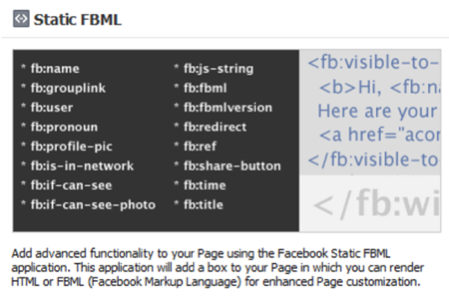Over the past couple of days, Facebook has been rolling out a revamped home page to all its users which delivers several major changes including real-time updates, new filtering controls, a new share box (called “the Publisher“), and an area that highlights some of the more important updates from your stream. For public figures on Facebook, the biggest change was the revamp of Facebook Pages. Now called “Public Profiles,” these pages are supposed to act more like personal profiles – they can even update the News Feed. However, that alone stands as the only major change of note to these company-centric locales on Facebook. In almost all other ways, pages remain static, broken, and difficult.

Public Profiles Still Don’t Work
According to Facebook’s director of product, Chris Cox, in the new version of Facebook “profiles and pages become the same thing.” During last week’s presentation where he and Facebook CEO Mark Zuckerberg introduced the changes taking place, Cox was quoted as saying, “now users can open up their profiles for other users to subscribe to. That means pages will become more like the profile.”
That couldn’t be further from the truth.
Pages Didn’t Get the New “Publisher” Box
After testing the new public profiles for hours on end last night, we discovered there are still a lot of issues with these pages. In some cases, the problems we encountered have existed for some time, but in other cases it’s just a matter of pages not getting the same updated features as the personal profiles did.
For example, one of the most exciting changes to the new Facebook is a box called “the Publisher.” This feature brings new functionality to what was once just the status update box. Before, that box prompted you to finish the sentence that began with your name and ended with “is…”. Users could then type in a quick thought and post it to their wall.
Today, the new Facebook Publisher box asks you “What’s on your mind?” The change is a nod to the rapidly growing social network Twitter where users answer the question “what are you doing?” and then respond with text, links, photos, videos, and more, thanks to an ecosystem of integrated third-party applications that let users share more than just a simple thought.
Since the Facebook upgrade, however, the Publisher box permits users to share updates that go beyond text-only notes. Users now can share photos, links, and videos. Some applications are also publisher-integrated, appearing below the box and in the drop-down list beneath it.
Here’s what the Publisher box looks like on a personal profile.

Unfortunately, Public Profiles don’t get this feature. Instead, this is what the Publisher box looks like on a public profile.

Clearly, public profiles are not the same as personal profiles in this area, but the differences don’t stop there.
Most Applications Don’t Work on Pages
If you don’t run a Public Page, then it probably never occurred to you to think about how Facebook applications work with Pages. As it turns out, Pages aren’t able to run most of the applications you can run on your personal profile. This is not a new issue, but it was not corrected in the major upgrade that supposedly makes “public profiles work like personal profiles.”
After creating a Public Profile, you have the option to browse through the available applications on Facebook to find apps you want to add to your page. There is not a separate list for Page-aware applications so you’ll find that many apps just don’t work. You’re often only provided with the option to add an app to your Page’s list of “Favorites” – a move that serves as nothing more than a list of recommendations to your fans. While this is a great way for a company wanting to promote their other public pages and applications (like the New York Times does here), it limits the functionality of the profiles themselves…especially since it’s the applications that often make profiles so dynamic.

So Broken: No Twitter Apps for Pages
A notable example of this problem is with Twitter applications. Although there are multiple Twitter apps available on Facebook, the current ones either don’t work with Pages at all or they don’t work all that well. The most popular of these apps, for example, only works with personal profiles or pages – it doesn’t work with profiles and pages.
Obviously, this could be a major inconvenience for public figures, as they would probably like to link their Twitter updates to their Facebook status updates. But today, they are not able to do so without also updating their
personal
profiles with the same information.
You can follow this thread on the Twitter app’s discussion board where people are talking about the various workarounds for the lack of Twitter integration on Pages. To date, the best workaround for this issue is using the Facebook Static FBML application to display a Twitter badge on your Public Profile page. This is a poor substitute as the badge just reads “follow me on Twitter” and includes a link. It can’t update your status.
To add the badge, you must first add the Static FBML application which lets you copy and paste code (HTML or FBML – Facebook Markup Language) into a box. That box can then be added to your Profile page.

Another workaround would be to add your Twitter’s RSS feed to the Notes application, one app that does work with public profile pages. However, the Notes application only allows for the import of one external feed so you have to make a big choice here: do you import your Twitter updates or your blog?
If you’re savvy with services like Yahoo Pipes or Xfruits, you can combine RSS feeds into one master feed and use that in the Notes application instead. Yet this still is not an ideal solution because the RSS updates from these services are slow. In fact, in testing both Pipes and Xfruits, updates were so delayed that using either feed was almost pointless. Definitely not great for sharing information on a real-time web.
You should also be aware that if you put the Notes box on any other page of your public profile besides the Wall page, it will not be able to update your Wall with posts. So much for customization!
Apps Get Confused Between Personal Profiles and Pages
Another major issue with applications is how they get confused between your Pages and your Profile – like the Twitter issue referenced above. When you create an account on Facebook, you’re automatically given a Facebook profile. That causes problems with some applications as they don’t seem to know whether to link to your profile or to your page. Again, with Facebook’s own Notes application, clicking through the Notes link on the “Page Manager” (the area where you edit the settings for your Page’s apps), you’re taken into the Notes application where personal and public notes are merged. Although you were working on your public profile page, once you arrive in the application you’ll be surprised to see that it’s already linked with your personal profile. All the links you’ve been sharing on your personal profile are also found here on this page, intermingled with your public notes.
This is confusing since most people would assume that, since they had arrived at the Notes app via their Public Page, this would be a separate instance of the application that’s associated only with the page, not the profile. But that is not the case. Even more confusing is the fact that imported RSS feeds you set up on your Page will also import to and post to your personal profile. Disaster!
Other applications, like the popular “My Flickr” app for example, don’t even work on Pages even though they have a button that says they do. Perhaps the reason this app failed in our tests was because it was already on our personal profile, but it’s hard to say for sure.
Don’t Think Problems Can be Solved with a Separate Login, Either
After reading through all these issues with applications you may think the easiest solution is to just create a whole new login for the sole purpose of managing a page. Not so fast!
If you’re a public figure and not a business who wants to create a page for fans in addition to your own private profile, you have to do so under the same login or you’re in violation of Facebook’s Terms of Service (TOS). According to the site’s help documentation:
“Please be aware that managing multiple accounts is a violation of Facebook’s Terms of Use. If we determine that an individual has more than one account, we reserve the right to terminate all of their accounts.”
Either Create a “Business Account” or Don’t Bother with Public Profiles
That sounds to us like Facebook doesn’t want individuals to set up separate accounts. The other option – and one we did not test – was to set up a “business account.” Business accounts are designed for companies that need to set up a page without a personal profile associated with the login. Although these business accounts are still limited by the lack of page-aware applications, they are more customized to a business’s needs. For example, the Facebook business account for bands comes pre-installed with a music player, video player, discography, reviews, tour dates, and a discussion board.
Companies operating on Facebook through business accounts may not have all the same problems as a public figure who creates a page in addition to their personal profile, but there are still issues to be had. But for people, not businesses, it’s almost as if Facebook doesn’t want them to really take advantage of the Pages feature.
In fact, we think Facebook might even be actively discouraging people, be they public figures or otherwise, from setting up pages to represent their public-facing image. There seems to be an undercurrent of thought at Facebook that people should just open up their private lives to the world. You can see this belief in action when you examine how difficult and complex Facebook’s privacy settings are. Those settings are so granular and there are so many different areas to adjust, one has to imagine that perhaps Facebook doesn’t really want people to adjust them at all.
If Facebook made Pages easy for personal users to create and keep separate from their personal profiles, then nearly everybody would go use them – especially when it came time to “friend” people you didn’t really want to friend – people like business colleagues, the boss, and followers (if you’re a public figure).
As a “normal” Facebook user, you may not ever run into these issues, but for public figures, it’s becoming a real problem. And by “public figure,” we don’t necessarily mean major celebrity – small communities also have their own micro-celebs that attract a lot of friends and followers. Even adding as many as 100 or 200 of these so-called “friends” can dilute a public figure’s ability to use Facebook effectively, despite the new friend filtering features introduced in the upgrade.
This problem isn’t just limited to the tech bubble where everyone tries to friend Kevin Rose and Leo Laporte – it’s a growing trend in every industry. It’s also an issue we’ve encountered before – back then it was called MySpace.
MySpace’s core belief is also centered on this idea of openness. Profiles are open by default and gathering the most friends practically became a contest in MySpace’s heyday. But that also may be, in part, what led to its decline among users. (Well that and those garish profiles with glitter text).
By not duplicating the extreme openness of MySpace, Facebook had a chance to differentiate itself. Sadly, it seems that they haven’t figured it all out yet. For public figures, a choice still has to be made: “do I friend everyone who wants to follow me and dilute my network or do I keep Facebook for private connections only?” An upgrade to public profiles should have offered a better option than this, but it did not.
Why Is It So Hard for Individuals to Maintain Public Profiles?
We’re not sure why it needs to be so difficult to let some users (users that is, not businesses) maintain a public profile on Facebook. Why can’t status updates and other posts just be checked as to whether they get posted to a public page too? Why can’t applications be built with different settings for personal profiles and pages? Why can’t “Share on Facebook” pop-ups have a checkbox that reads “also post to my public profile”? Are the technicalities of implementing a simpler system really all that difficult?
Or is it that Facebook doesn’t really care about the people who want to build a public profile page – only the businesses that want to build pages and buy ads, too?
If Facebook can’t strike the right balance between public and private sharing for public figures, it leaves the door open for someone else to do it better. At this point, we would welcome that challenger. Actually, that challenger may have already arrived. It’s called Twitter – the social network that gets one-way friendships right. And the one Facebook has now tried, but failed, to copy.










